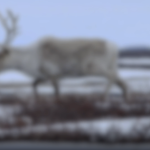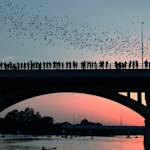Bat Bridge
2000s CE • S Congress Ave, Austin, TX, USA
A fluttering cloud would eclipse what was left of the sun. Like clockwork, 7:12 PM in Austin, TX summer evenings triggered hundreds of thousands of Brazilian bats to awake from their slumber and swarm out from beneath the South Congress Bridge. For the family, watching the evening bat swarm was an annual tradition; the cramped three hour drive out to Austin, Dad's coffee stop at Mozart's coffee, and the coatings of bug spray Mom would layer us in before the evening, all to see our beloved bats emerge from Bat Bridge. These fond memories from the early 2000's persisted when we moved to Japan in 2007. So, when we returned to Houston in 2010 and the tradition was reinstated, the bat swarm was fresh in my mind. Our first year back, I remember sitting with my older sister soaked in bug spray, eagerly listening for the first cries of the bats. However, as the clock struck 7:12, only streaks of black trickled out from under South Congress Bridge. Perhaps this batch is a prequel to the main act? I wondered. But as the minutes ticked by and the stream slowed, it became evident: the vivid cloud of Brazilian bats was no more. The South Congress bats have played an important role in the vibrant city's culture since 1980, when engineers erected the bridge, which happened to have crevices perfect for nesting. Now, however, with over a third of the one thousand bat species considered vulnerable or endangered, the bridge's unique shape is not enough to maintain a suitable home. As the climate changes rapidly, species may only keep up at a certain rate, and one consequence of that is our bats must either adapt or disappear. Until we come to terms with how our actions and consumerist culture are tangibly altering the environment, South Congress remains chillingly quiet.


Learn about Maya Lin’s fifth and final memorial: a multi-platform science based artwork that presents an ecological history of our world - past, present, and future.

Discover ecological histories and stories of former abundance, loss, and recovery on the map of memory.

Learn how we can reduce our emissions and protect and restore species and habitats – around the world.

See how art can help us rethink the problems we face, and give us hope that each one of us can make a difference.

Help make a global memorial something personal and close to home. Share your stories of the natural world.


